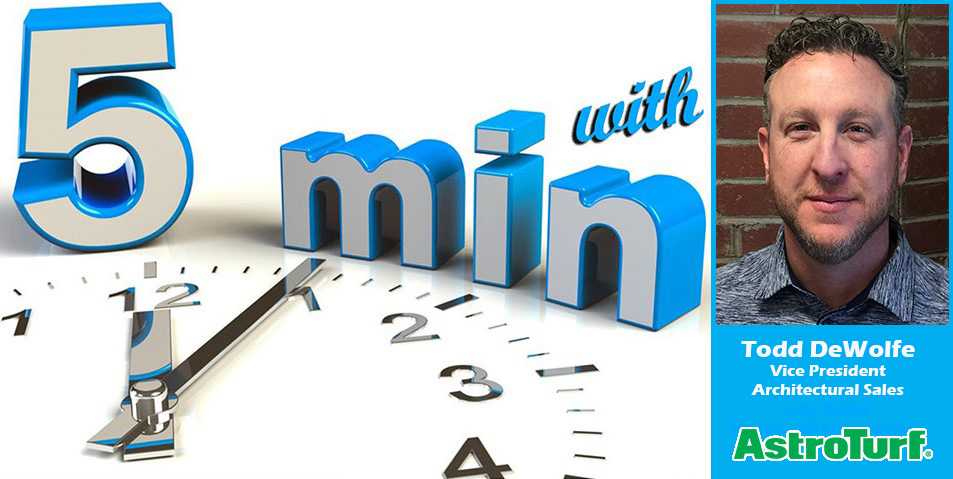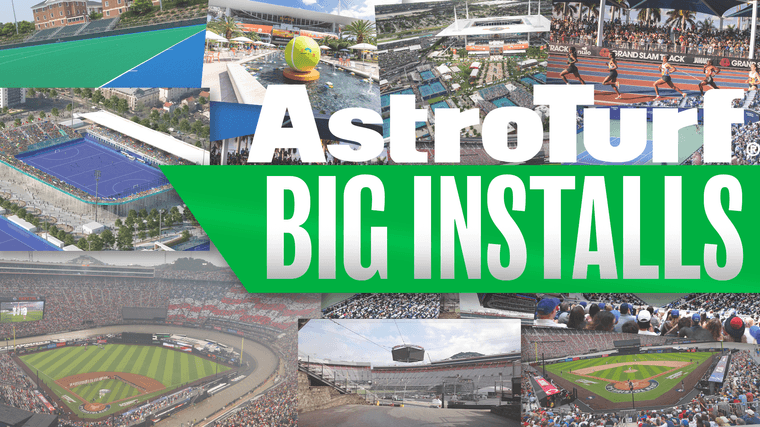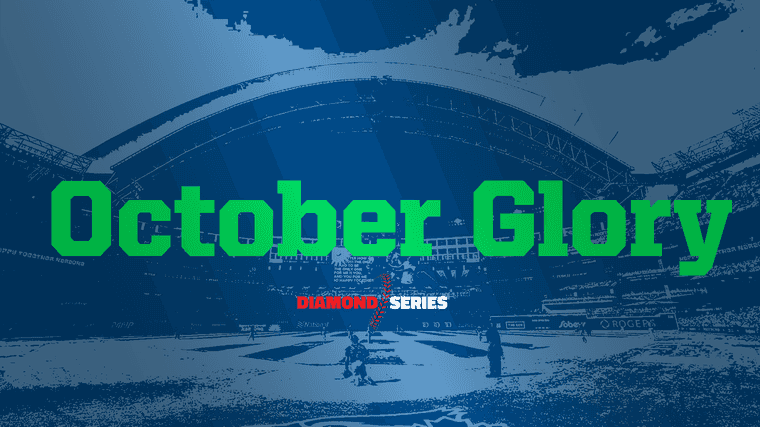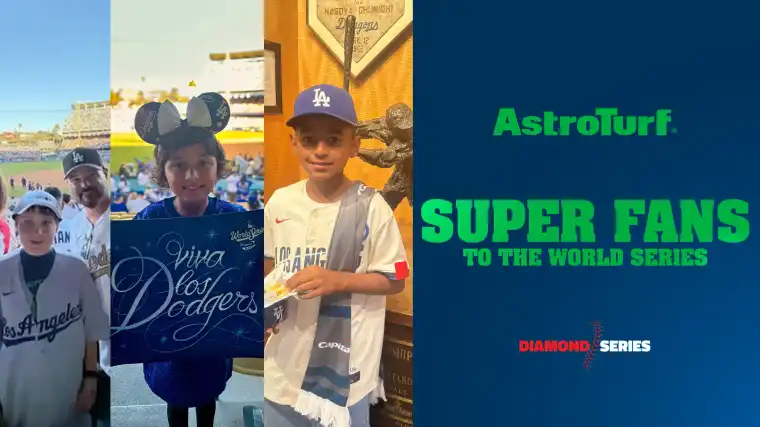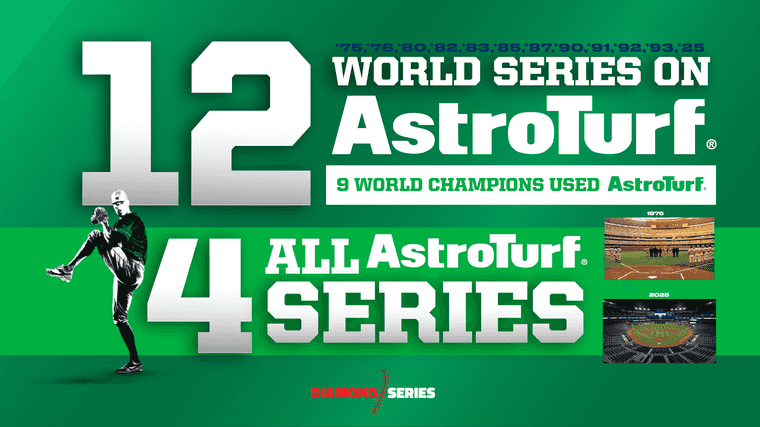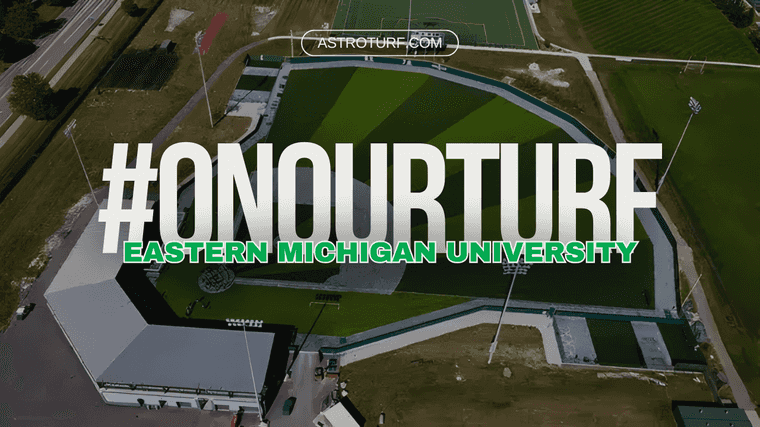Welcome to our series of Five Minutes With… blogs that will feature interviews with AstroTurf’s staff of experts, partners, clients and friends. We hope you learn something about our industry and the great people associated with it. Today we talk with Todd DeWolfe, AstroTurf’s Vice President of Architectural Sales.
It has been said by your peers that you eat, sleep, and breathe synthetic turf. Where does that passion come from and how long have you had it?
Well, I was very fortunate to kinda “grow up” in this industry working for ProGrass and now with AstroTurf and the SportGroup after the merger. When I started in 1999 there was one type of turf fiber and very few variables. The turf world being not so complex back then allowed me to build on that base knowledge as the synthetic athletic field industry grew. It’s not so simple now. From products to testing the industry has grown by leaps and bounds. The industry itself is very competitive and you have to have that competitive mentality. You’ll hear many coaches say “Every day you either get better or you get worse. You never stay the same”. There is always something to learn in this industry and I love that about the turf world. The industry is changing and AstroTurf is and will continue to be on the front end of that science. It’s exciting to work with such a forward-working company and that helps drive my passion. Being a father of two great daughters helps keep me grounded…they would be excellent in turf sales someday for being forced to listen to me their whole lives.
The overwhelming majority of AstroTurf’s 2018 field installations contain a RootZone. Why are customers moving at a record pace to this type of system?
I can’t say enough about our RootZone technology. Competitors have never been able to fully replicate the quality of our RootZone in manufacturing. Before joining AstroTurf I had to sell against it all the time….it’s a lot better being on this side of the fence. AstroTurf has been manufacturing and installing RootZone longer than anyone else and it shows. I’ve been on a lot of fields, can’t even guess how many but the nicest field I’ve seen is a 6-7 year old RootZone field near home that Rich Jordan sold to Brighton High School. This field has helped drive the RootZone product in the Midwest and helped Aaron Klotz and I continue the growth in Michigan to where the majority of our fields in Michigan this year had the RootZone technology. The ease of less maintenance for hot spots, the dense carpet, less infill splash, not having to top dress as often as non RootZone fields really helps owners make the decision on their own. We’re changing the game and constantly improving our systems. What owners are buying is proof.
What advice do you give customers who are planning on retrofitting their field?
Do as much homework on the front end as you can. Learn as much about the industry as you can before you get pricing. You’ll be amazed how much the technology and mindset has changed. Know what you have under your turf and what your turf is, infill included. Keep your drawings and spec from the original installation. Don’t accept just that your field hasn’t had drainage issues that everything will be ok. Work with experienced contractors who have been through this and will be your partner. You get one chance to get this right. Set a realistic budget once you have done your research. Research warranties, products, companies, installations, fiber, infill, shock pads, performance testing, edge detail……Pick a system that will last and serve your community well for your needs.
We know that it’s not just about what’s on top, there’s a lot of other things that have to be done before the turf goes down. Can you speak to the advantages of looking for a field builder that can provide you with a turnkey project?
At AstroTurf we really are a partner. This is a long-term partnership with our clients and when the turf is removed we need to make sure that the dynamic drainage base is working to full capacity. Positive drainage, stone stability and planarity are three main components. Stone needs these three components, without one of the three you will have an issue. The pipes need to be scoped to make sure there is no blockage. We’re not 100% sure what’s under the turf until we remove the old system. Having existing as built drawings from the original bids will help. Again why working with experienced contractors is so important and the AstroTurf Project Managers and Operations team has some of the best and brightest in the industry.
The debate rages on in our industry about infill vs. fiber. Will you give us your take on which concept provides a better performing system?
Fiber has improved so much in wear and UV degradation since the start of the industry. Fiber is the most important key in the longevity of your system. Owners will have different performance requirements. Would we sell the same system to a D1 soccer program that we would sell to a American D1 Football program? No. We recommend different fibers and different infills to meet their performance requirements. Soccer is a kick-through sport and American football is a dig in and push sport. They have different hot spots for wear. You never play 100% on either the fiber or the infill. Infill can always be added over the life oft the field and it should be as part of your regular professional maintenance program. Fiber cannot be added. Once the fiber is worn out, the system is worn out. High face weight, high performance turf systems are the future. Higher face weight turfs may not be less expensive at purchase but in the long run they are more cost effective for the owner.
If you weren’t educating the world about the merits of AstroTurf, what do you think you would be doing?
Wow, not sure, I think I’d find my way back to the turf world one way or another….I’d have to say working in coaching or some other sports related industry. Now that I’ve been in the sports related industry world over 20 years I can’t imagine doing anything else.
